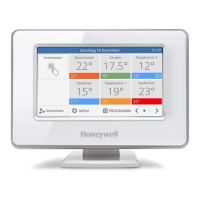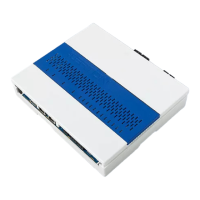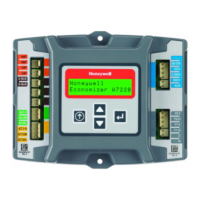ENGINEERING MANUAL OF AUTOMATIC CONTROL
CHILLER, BOILER, AND DISTRIBUTION SYSTEM CONTROL APPLICATIONS
385
SYSTEM CONFIGURATION
HEAT GENERATION
Excess heat is produced in steam electrical power generating
stations which can be reclaimed as in Figure 126 and sold to
provide heat for other uses. Other industrial processes and waste
incineration may also provide a source of excess heat which
can be reclaimed. Geothermal sources and boilers are other
heat sources.
HEAT DISTRIBUTION NETWORK
The distribution network is one part of a district heating
system. It transports the heat from the heat source to the
consumer. Heat is absorbed by the heat transfer medium, hot
water or steam, at the source and delivered to the consumer.
Primary networks are one- or two-pipe distribution systems.
In a two-pipe system the hot pipe, or supply line, transports the
water or steam to the substation, heat is drawn from the network
at the substation and transferred to the consumer’s side, then
the cooled water or condensate flows through the return line
back to the heat source to be reheated.
A one-pipe system transports the water to the consumer, heat
is drawn from the network at the substation and transferred to
the consumer’s side, then the cooled water is discharged to a
drain. This system is used with a geothermal hot water source.
HOT WATER SYSTEM CONTROL
Variable speed circulating pumps move the water through
the primary network providing the needed differential pressure
in hot water systems. An additional pressure holding system is
installed to keep the absolute pressure at the required level.
There are two control strategies based on outdoor air
temperature for transferring a requested amount of heat to the
consumer:
1. Constant Flow Control maintains a constant supply flow
rate and varies supply flow temperature.
2. Variable Flow Control maintains a constant supply flow
temperatures and varies supply flow rate.
The optimal temperature/pressure ratio depends on the length
and structure of the network, actual load, outdoor air
temperature, and pipe insulation. Because of the many
variables, a combination of both Outdoor Air Temperature
Control and Variable Flow Control or Variable Temperature
Control is often used.
STEAM SYSTEM VS HOT WATER SYSTEM
Steam networks differ mainly in the following points from
hot water systems:
– No pumps are required, the pressure difference between
boiler and consumer drives the movement of the steam.
– Condensate traps are required approximately every
0.3 miles.
– The return line diameter is much smaller because
condensate takes up less space than steam.
– Heat losses are significantly higher than hot water systems.
–The heat storage capacity of steam is lower than hot water.
– Maintenance costs are higher than hot water.
HOT WATER PIPELINE SYSTEM
Hot water systems must be protected against high pressure
peaks which could damage the pumps and pressure drops below
the evaporation point which results in the water changing to
steam. Common types of preinsulated pipelines must be
protected against temperatures exceeding 265F.
Factors affecting efficiency include optimal temperature/
pressure ratio with respect to the length and capacity of the
network, temperature differences between supply and return
flow, heat and water losses, as well as friction between the
water and pipe wall. Higher temperatures cause greater heat
loss by radiation and conduction while greater differential
pressure in the network produces heavier pump loads. Every
network has a different optimum value for the supply and return
pipelines. Use of friction reducing chemicals to decrease the
friction losses in the pipeline can reduce the pump power
required. Extracting as much heat at the substations as possible
also reduces pumping costs.
Additionally the water in the entire district heating system
pipelines also serves as a large heat accumulator and helps
compensate for peak loads or short periods of low heat
generation.
BOOSTER PUMP STATION
In large pipeline systems, using a single main pump requires
a large differential pressure (pump head) to overcome the
friction in the network. Figure 127 shows a profile of a single
pump system. Decentralized pumps (booster pump stations)
avoid this and keep the pressure in every pipeline section within
the required levels.

